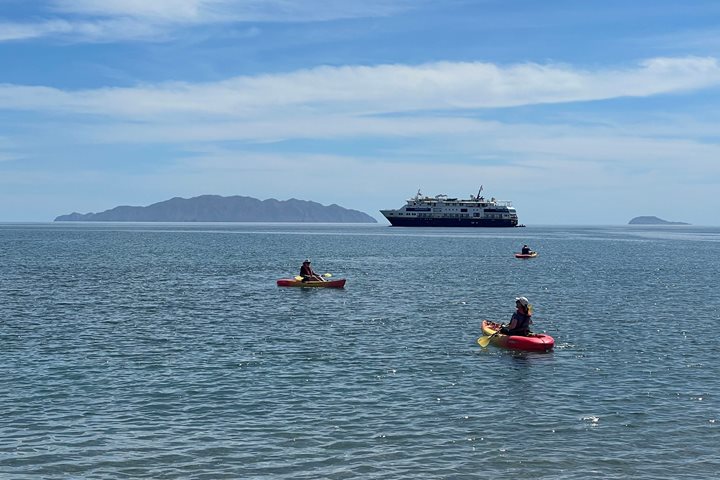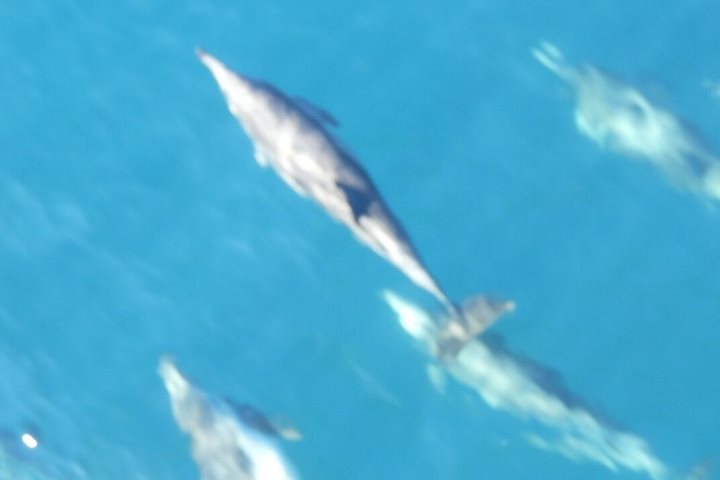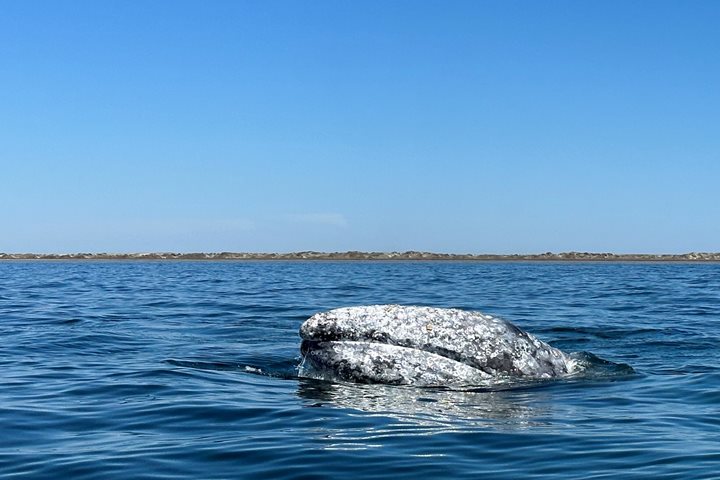The majestic Magdalena coastal lagoon and its associated long and slim barrier island looked grayish to our sleepy eyes when we woke up this morning on National Geographic Sea Bird. Later, the cloudy sky with subtle humidity gave rise to an unexpected sunnier and warmer climate. A light breeze swept the surface of the water and the sand dunes as well.
Under these conditions our enthusiastic guests and naturalists boarded the Zodiacs once again and stayed two rounds with the gray whales. It was our very last opportunity on this voyage to be in the core of the mothers’ and calves’ nursing activities. The amazing giants were intensely connected to us, and repeatedly came close and allowed themselves to be touched. They showed in their eyes, literally, real pleasure when dozens of hands rubbed the long scared, “meaty,” barnacle-and-“lice” loaded snouts of both mothers and calves. All parts of the whales’ bodies were also seen during their frequent playing behavior displays around and between Zodiacs.
But the whales were not alone: during the return to our floating “home” at noon, an osprey was seen perched on a branch of a dead mangrove tree, frozen like a living, feathered statue, right on the rim of a large colony of frigate birds, while hundreds of cormorants moved back and forth transporting natural material, like sea grass, land plants and even kelp, for the construction or their small, cup-like nests that are very well tied up among the mangrove trees’ branches.
Sadly, it was time to leave all that beauty. We had another enjoyable journey still to be completed. The ship slowly moved southbound in the Canal de la Magdalena with our local pilot on the wheel. On our way we had time to reflect on the vastness, importance, and ecological and biological richness of this magnificent coastal or marine wetland (composed of the Magdalena lagoon, barrier islands, and mangrove forests).
We landed on the Magdalena Island for the last time and walked on its familiar sand dunes and washed our feet on its Pacific side, called Santa Maria Bay, with its 7-mile-long, virginal beach. The so called sand-dollars (marine creatures related to the sea urchins) were extremely abundant on the shore, and made some of us to play piling them in diverse but creative shapes.
Then we came back to the National Geographic Sea Bird. The wind will very soon delete our tracks on the sand, but all the memories that we accumulated in our whole exploration of this wonderful piece of Mexico will never be erased from our hearts and minds.







